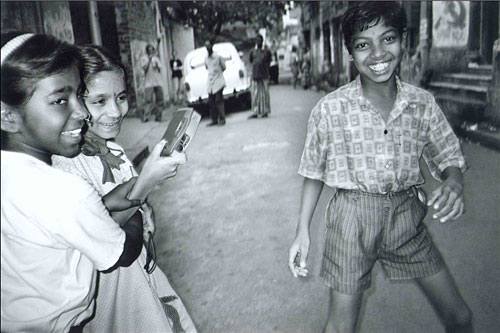
Art for Play, Awe, and Wonder
'land of milk and honey'
“Now as Erich Fromm wrote in his meaningful book "The Art of Loving", the earth is always symbolized as a woman (mother earth) and according to the Old Testament, the Promised Land is the land of "Milk and Honey". Here Fromm says that any mother can feed her child with milk, a liquid that gives life and symbolizes the acceptance of life and growth but rarely, truly rarely can one find a mother who feeds her child with honey too, a substance so sweet that bequeaths love for life. What Fromm meant was that a true mother would give her child the ability to accept and then above all to love life.
'Art for play' or 'Art for awe/wonder' are ways of trying to talk about those forms of art making which are primarily about enjoying life and experiencing it more deeply. About getting in the mud and playing with the good materials of the world. The lost art of Alchemy was something like this, engaging in direct and joyful observation of how beautiful the colors, textures, and interactions of elements are. (See James Elkins book, 'What painting is' for a great discussion of the similarities of painting an alchemy.)
The mode of play and experimentation with the materials of creation give us the intimate knowledge necessary for all the other forms of art.
This was an old window frame set up like a table. I places sand in it and let the kids from the valley center draw in the sand while took continuous still images. The images were turned into this video. These 'Sand trap drawings' are an example of art for play. They are low risk and fun giving the kids a means of discovery, and feeling successful. The finished product is not the point as much as the simple pleasure of playing in the sand.
Picasso had a famous long exposure shot where you see him drawing (from when the flash went off) and you see a bull drawn with a light (created during the long exposure in the dark). These are not original but a way of playing with light.
This one was done with the boys on the streets.
This is an image produced by 'KIDS with CAMERAS' Our Sierra Leone Beauty and Brokenness photos were another great example of giving the kids a chance to play and discover what happens when you take pictures. The results may turn into advocacy naturally but there is important reflection that is happening in the process of playing with a camera.
I find the simple structure of the Hiku a liberating low key way to experiment with words and ideas.
Retreat Haiku May 2005
1
Leaflets jump for joy
When through the umbrella comes
Spattering wet joy
2
Grace curving through limb
Raising leaves high to the sun
Gentle bow his hymn
4
Frogs green jokers laugh,
Mountains water gathering
And wind make my bath
5
Straight backed noble grass
Tips its hat in river wind
Roaring green applause
Also, reflective journaling, brainstorming, writing about events of the day are great ways to dig into the raw materials of your life. Other ways to playing in the mud might be working in clay, paint, charcoal, carving, making noises, sounds. All the baby talk of infants is their way of finding their voice, figuring out what combinations of air flow and air stopping makes what kinds of sound. Without this experimentation it is difficult to learn to speak.
In Art for play we are gathering raw materials, learning to enjoy them, use them, delight in them. we play in the sand, clay, and mud learning their inner properties. It is necessary for any artist to 'baby talk', to play in the mud, to be an alchemist wondering at the beauty of the stuff of the world before she can find her voice and articulate a beautiful idea for the love of God and community.




